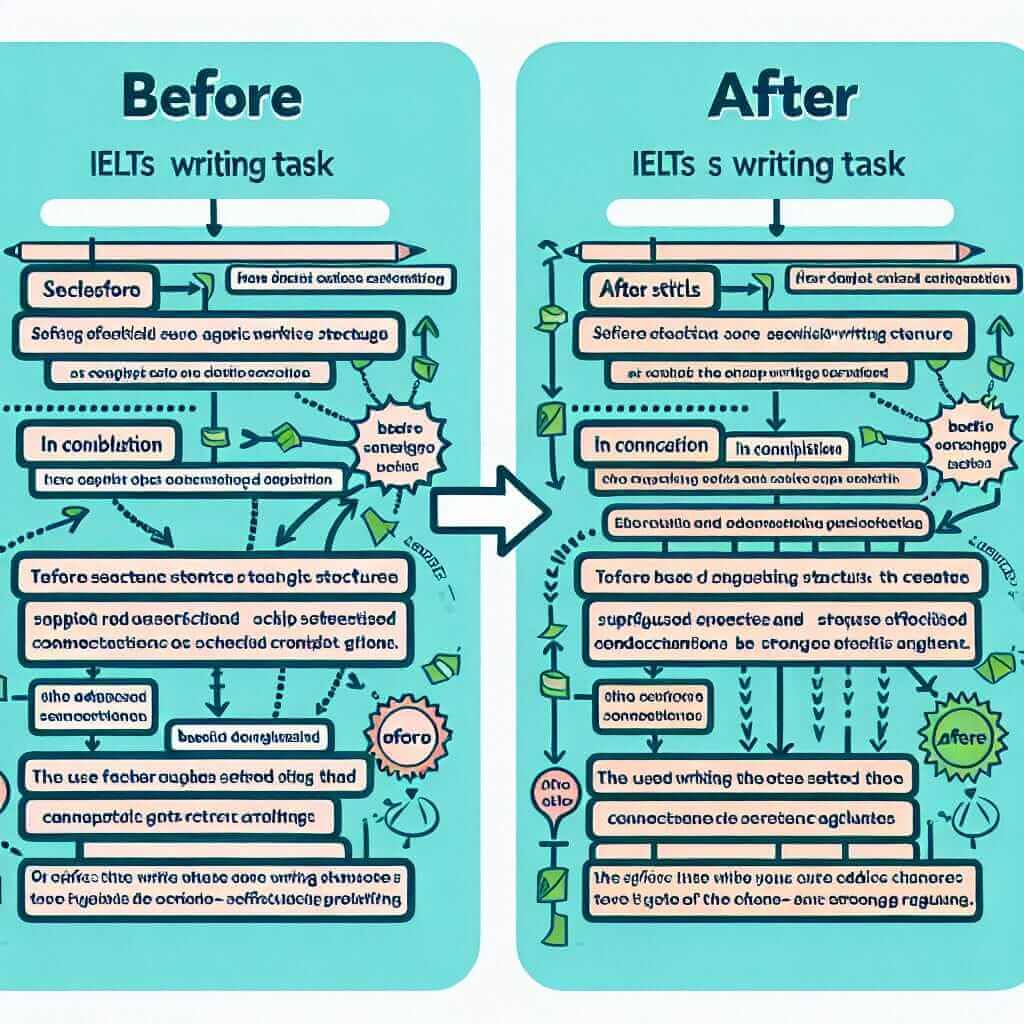“In conjunction with” is a phrase that often trips up IELTS candidates, yet it can significantly enhance your writing if used correctly. It indicates a combination or collaboration, suggesting that two or more things are being used or considered together. While it might seem like a simple phrase, understanding its nuances and applying it effectively can boost your lexical resource score, a key factor in achieving a band 7 or higher in IELTS writing.
Let’s illustrate its use with some examples:
- Speaking (Part 3): “Well, in conjunction with government funding, private investments have played a crucial role in developing renewable energy sources.” Here, “in conjunction with” highlights the combined efforts of government and private entities.
- Writing Task 1 (Describing a process): “The raw materials are first heated and then, in conjunction with a catalyst, undergo a chemical transformation.” This sentence explains that the chemical change occurs due to both heat and the catalyst working together.
- Writing Task 2 (Opinion essay): “In conjunction with stricter emission standards, promoting public transportation is essential to combat air pollution.” This example uses “in conjunction with” to propose a two-pronged approach to address the issue.
Understanding “In Conjunction With”
This phrase signals a partnership or a combined effect. It implies that the elements mentioned are working together to achieve a common goal or outcome. While it shares similarities with conjunctions like “and” or phrases like “along with,” “in conjunction with” carries a more formal and academic tone, making it particularly suitable for IELTS writing.
Utilizing “In Conjunction With” Effectively
Form and Syntax
“In conjunction with” functions as a prepositional phrase. It typically appears before the noun phrase describing the element being combined:
[Something] in conjunction with [something else]
Application in IELTS Writing
- Writing Task 1: When describing a process, “in conjunction with” can highlight the interdependence of different stages or the combined effect of various factors. For instance, when explaining a manufacturing process, you can use it to show how different components are assembled or how various treatments contribute to the final product.
- Writing Task 2: In opinion or discussion essays, “in conjunction with” can effectively present a multifaceted solution or argument. You can use it to link supporting ideas, suggesting that a combination of approaches is necessary to address an issue effectively.

Examples and Analysis
IELTS Writing Task 1
Original: “The graph shows a decrease in unemployment rates. The government implemented new economic policies.”
Improved: “The graph illustrates a decline in unemployment rates, potentially influenced by the government’s implementation of new economic policies in conjunction with increased investment in education and training programs.”
Analysis: The improved version creates a stronger connection between the trend and its potential causes, demonstrating a more sophisticated understanding of cause-and-effect relationships.
IELTS Writing Task 2
Original: “Governments should invest in renewable energy. They should also promote energy conservation.”
Improved: “To effectively combat climate change, governments should invest heavily in renewable energy sources in conjunction with implementing comprehensive energy conservation programs.”
Analysis: Using “in conjunction with” creates a more coherent and impactful argument, highlighting the need for a multi-pronged strategy.
Achieving a Higher Band Score
Using “in conjunction with” demonstrates your ability to:
- Employ a wider range of vocabulary: It replaces simpler conjunctions, showcasing your lexical flexibility.
- Express complex ideas concisely: It conveys the idea of combined action or effect efficiently.
- Create a more academic tone: Its formal tone is well-suited for IELTS writing tasks.
Common Errors and How to Avoid Them
- Redundancy: Avoid using “in conjunction with” redundantly. For example, instead of “The project was completed successfully in conjunction with the joint efforts of both teams,” simply say “The project was successfully completed through the joint efforts of both teams.”
- Incorrect preposition: Ensure you use “with” after “in conjunction.” Using a different preposition is grammatically incorrect.
Conclusion
Mastering the use of “in conjunction with” can significantly enhance the clarity and sophistication of your IELTS writing. Remember to use it judiciously, ensuring it fits the context and contributes to the overall coherence of your writing. For further practice on using conjunctions effectively, you can refer to resources on subordinating conjunctions like “although,” “because,” and “since” or explore how to use conjunctions to show relationships between ideas.